Ever felt overwhelmed by complex processes or algorithms? I know the feeling. That’s why I use flowcharts to turn confusion into clear, step-by-step logic. In this guide, I’ll show you an easy example of making a flowchart with draw.io. It’s quick, practical, and helps you solve problems faster. Let’s dive in!
What is draw.io?
If you’ve never heard of draw.io (opens in a new tab), you’re in for a treat. It’s one of my favorite tools. Why? Because it’s free, browser-based, and incredibly flexible. I use draw.io whenever I want to create diagrams fast.
From flowcharts to mind maps to UML diagrams, draw.io handles it all. It integrates easily with tools like Google Drive, GitHub, and Microsoft Teams. That means I can access my diagrams from anywhere, anytime. Plus, the drag-and-drop interface makes it super user-friendly.
So, if you’re looking to build a flowchart example with draw.io, you’re in the right place. I’ll guide you step-by-step.
Creating a Flowchart Example with draw.io
Let’s create a simple flowchart together. This diagram shows the steps many of us go through every morning. It’s a fun way to learn the basics.
Open draw.io and Choose Flowchart Shapes
First, I open draw.io in my browser. Then I go to the left sidebar. I scroll down and select Flowchart shapes. These include terminators, process boxes, decision diamonds, and arrows.
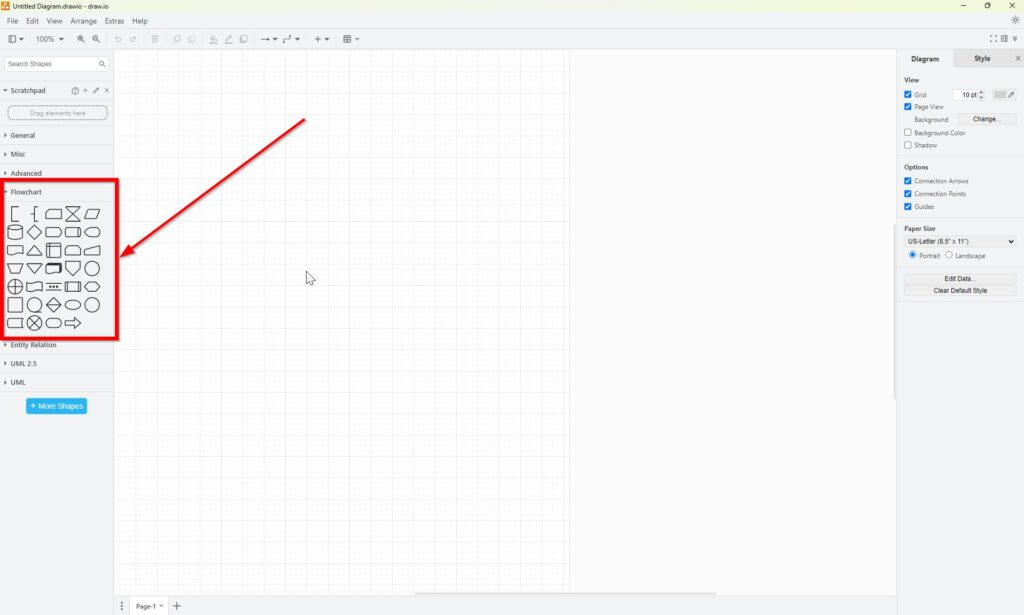
Start with the “Start” Shape
I drag the Terminator shape onto the canvas. This shape marks the beginning of our process.
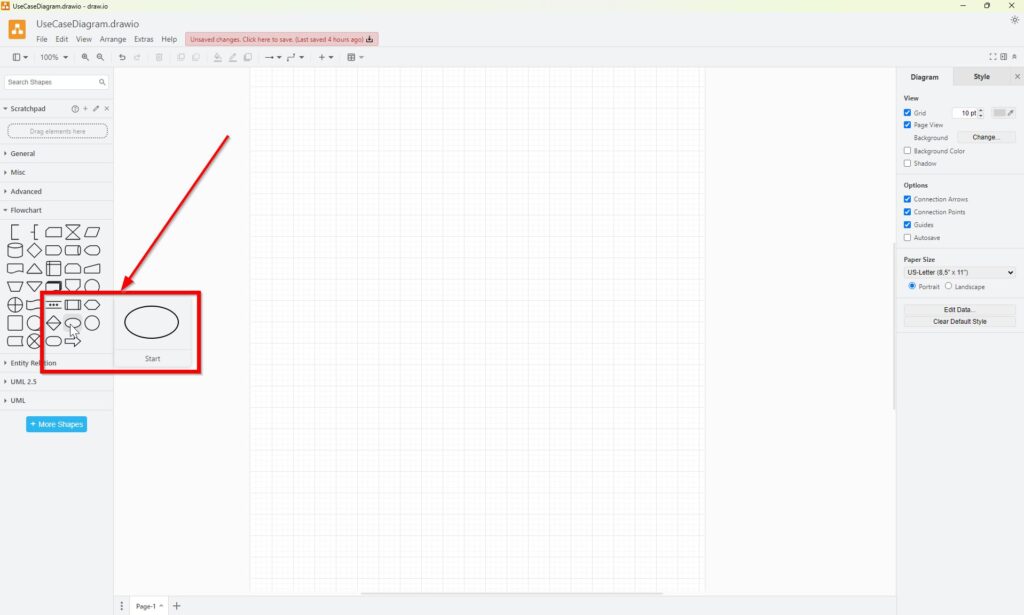
I double-click and type “START.” Now we’re ready to build.
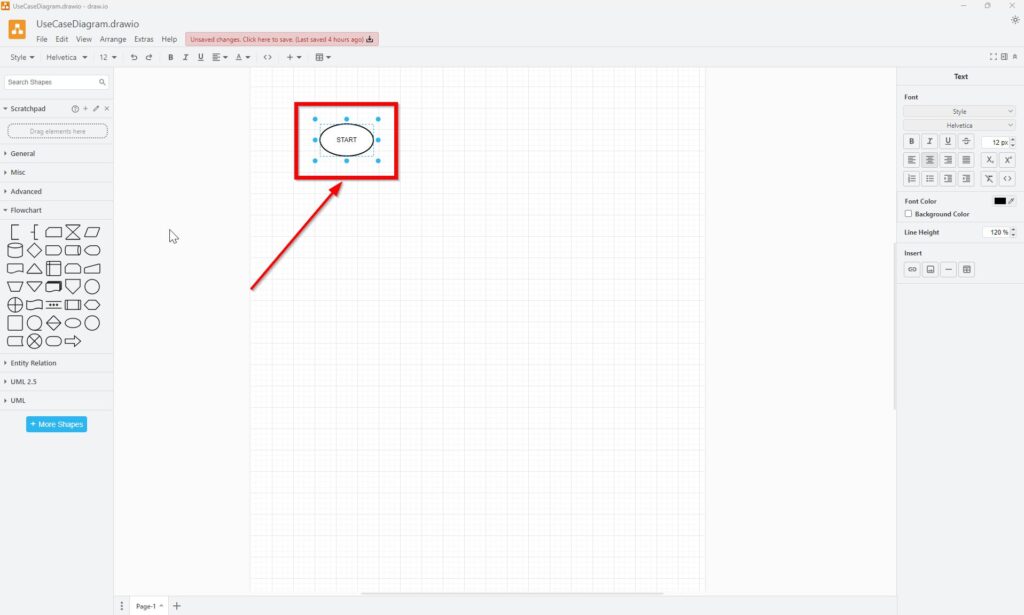
Create the main arrow shape
I select the Arrow shape.

To make the arrow more appealing, I modify and rotate the arrow to suit my needs. Use the blue action points.

Add the First Process
Next, I add a Process shape. I connect it with the arrow from the START box.
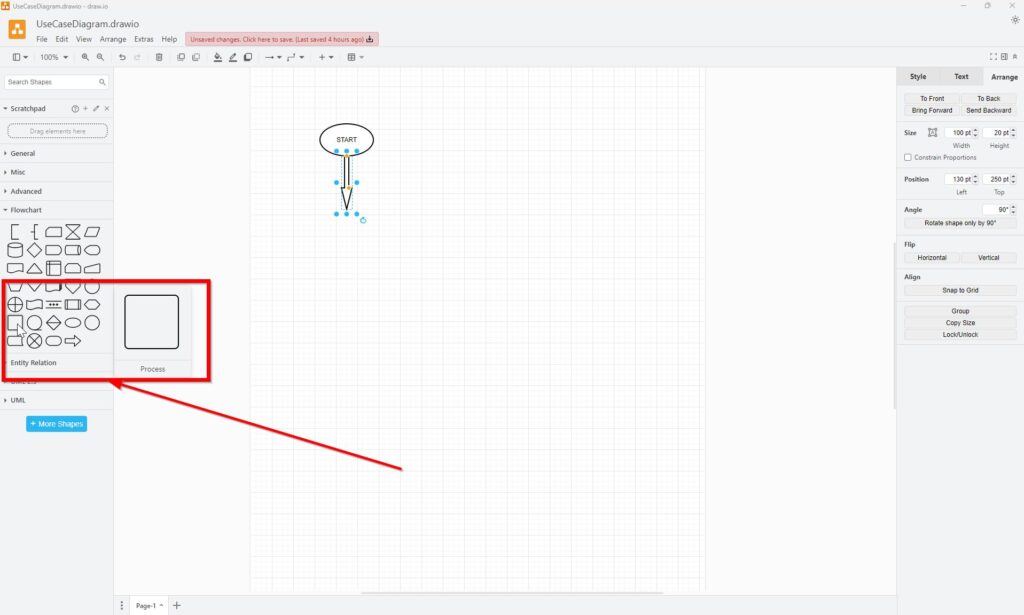
I label this one “Alarm clock rings.” It’s our first real action.
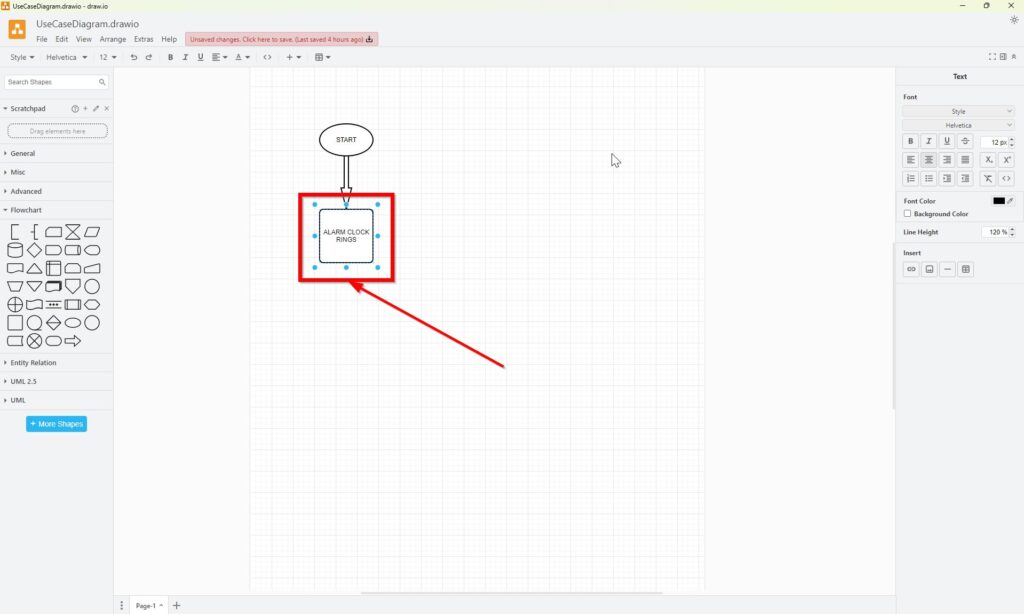
Insert a Decision
Now comes a choice. I drag in a Decision shape — the diamond.
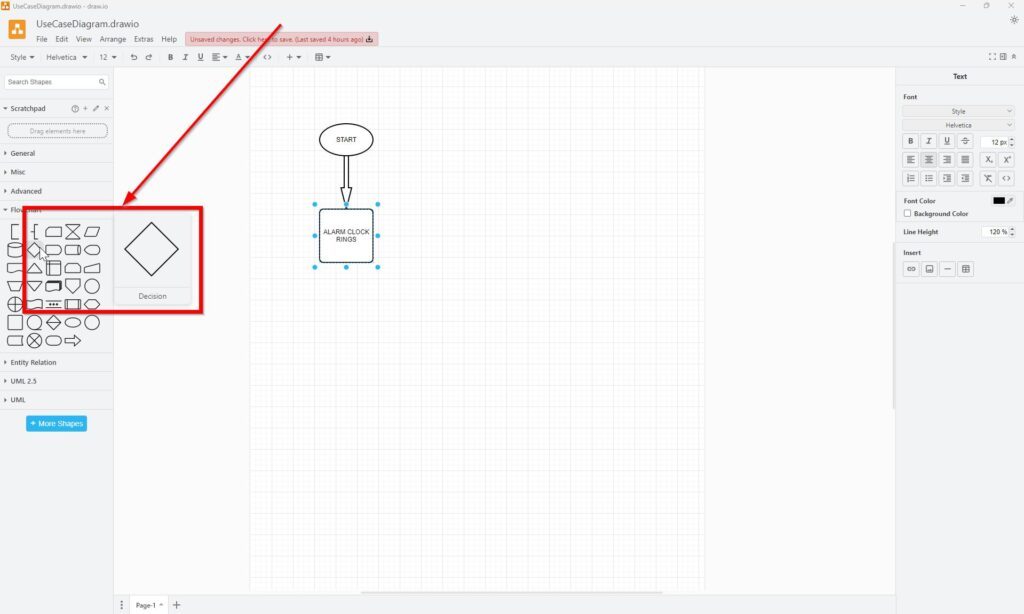
I connect it with another arrow. Inside, I type: “Ready to get up?”
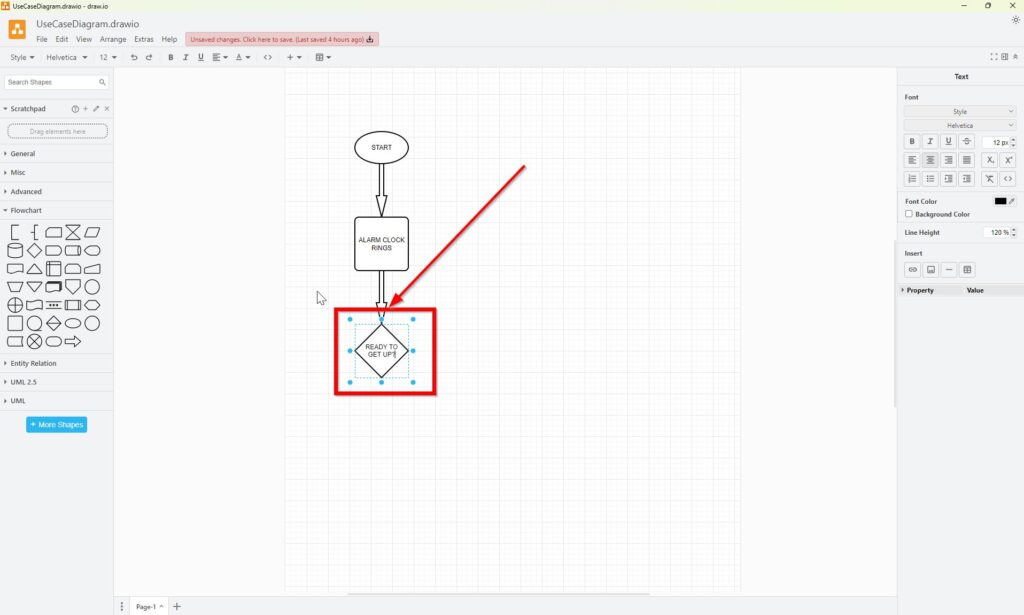
Continue with a final process
This one says “Get out of bed.” Then, I connect it with another arrow.
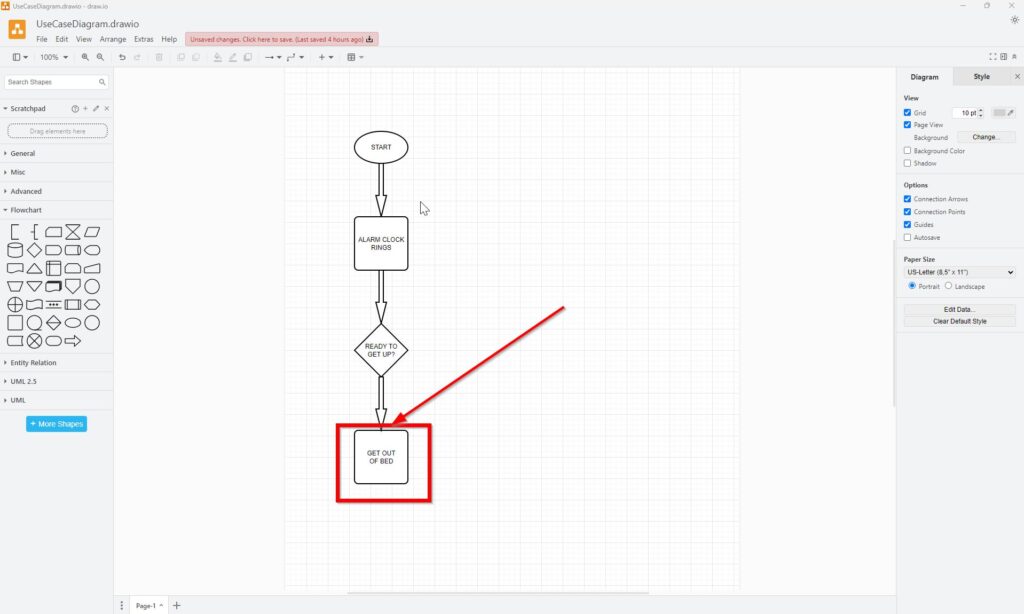
End the process without looping
I add one more Terminator shape.

I type in “END.” Now, the flowchart shows a complete line.
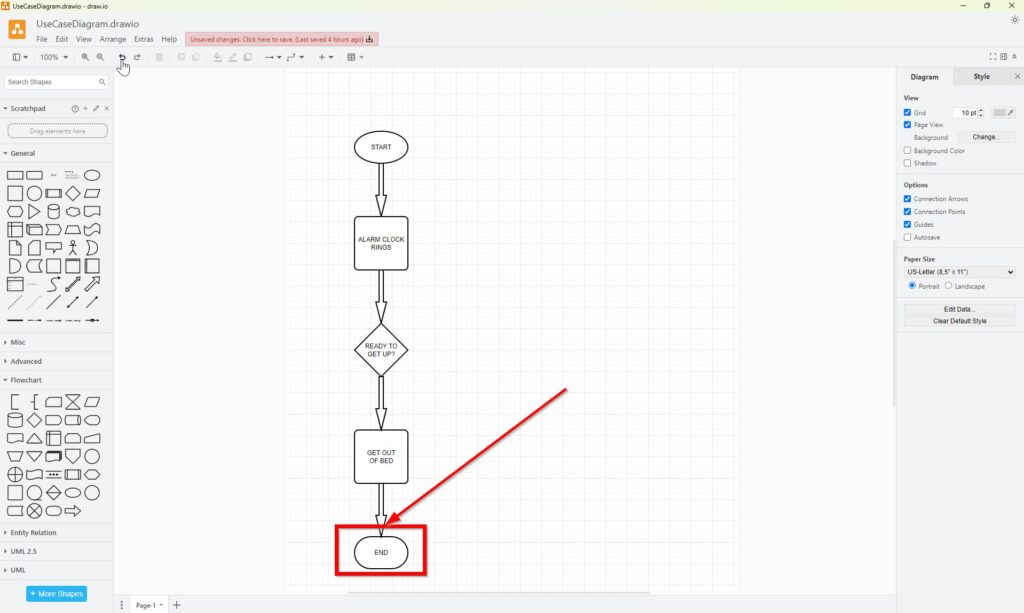
Build a Loop with Snooze
Here’s where things get fun. I insert a loop to show what happens if I hit snooze. I add another process box: “Hit the snooze button.”Then, I include a Delay shape labeled “Snooze.”
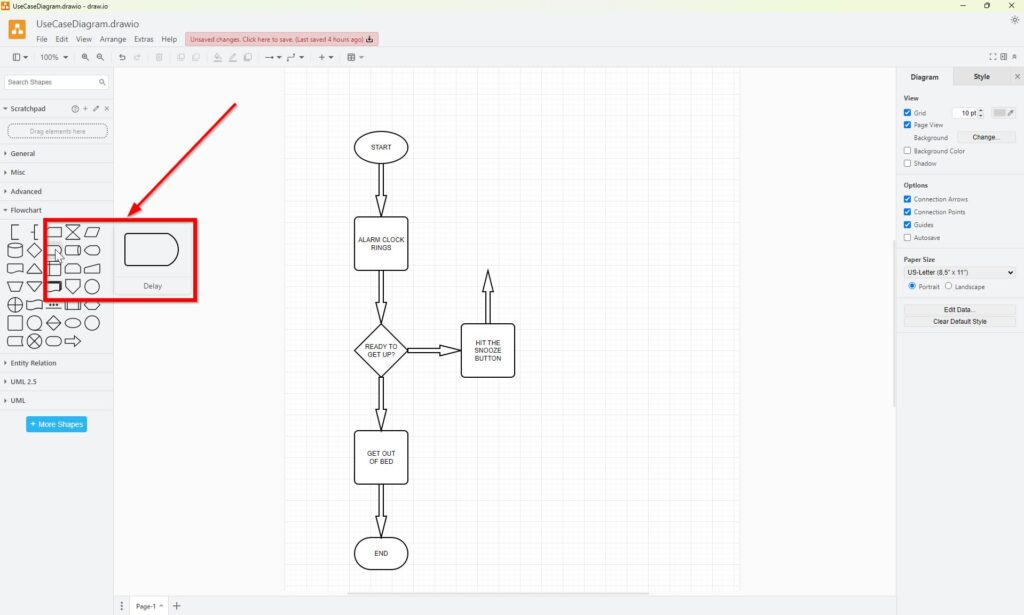
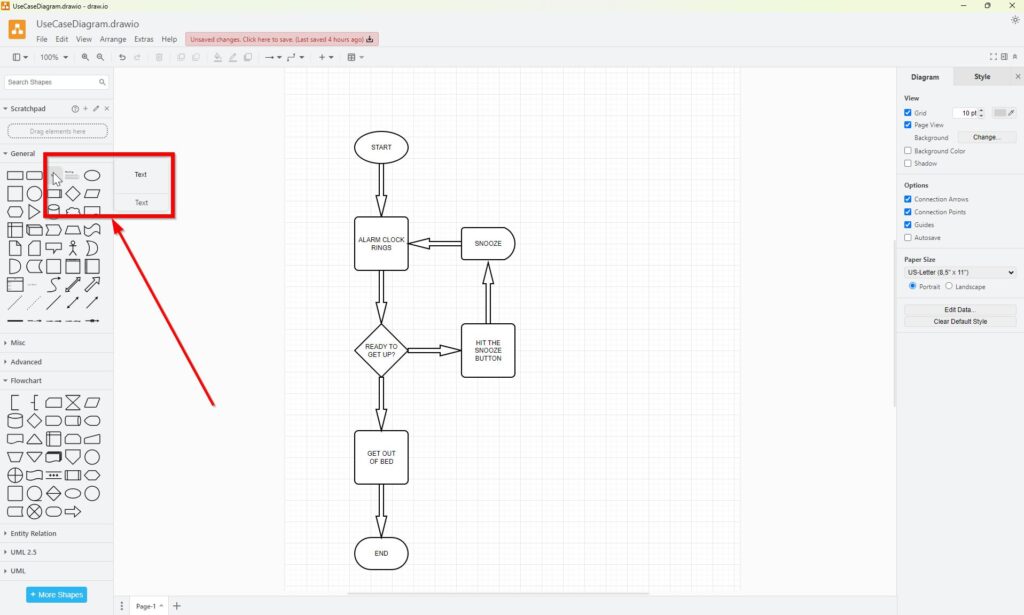
To make the loop clearer, I stretch one of the arrows longer. It wraps back to the decision diamond. This visual cue really helps. It tells me the process isn’t done yet.
To make the paths clear, I borrow two Text elements from the “General” shapes pane.
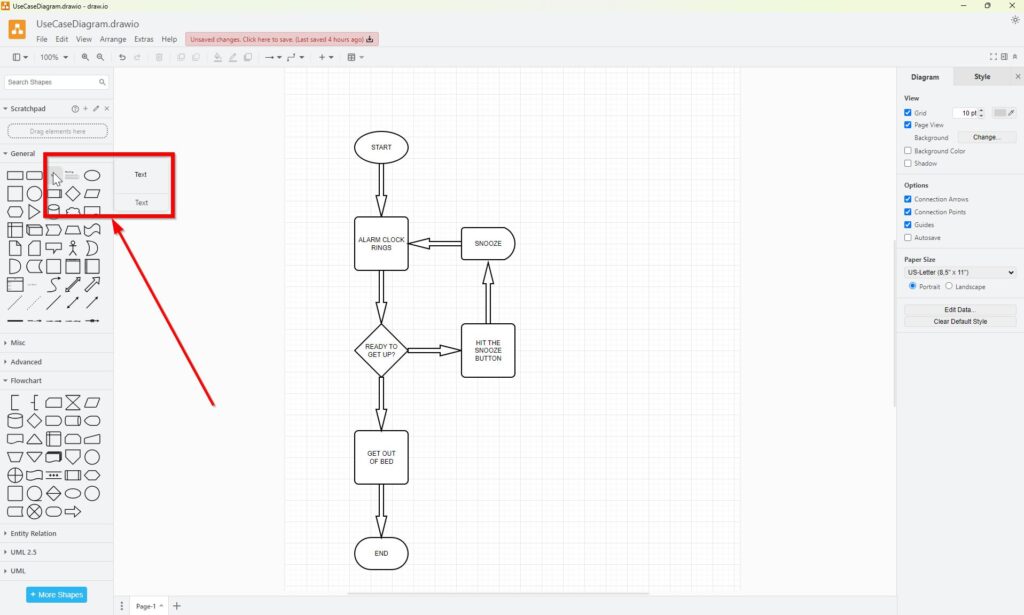
I label one arrow “YES” and the other “NO.” These text boxes help show what happens next.
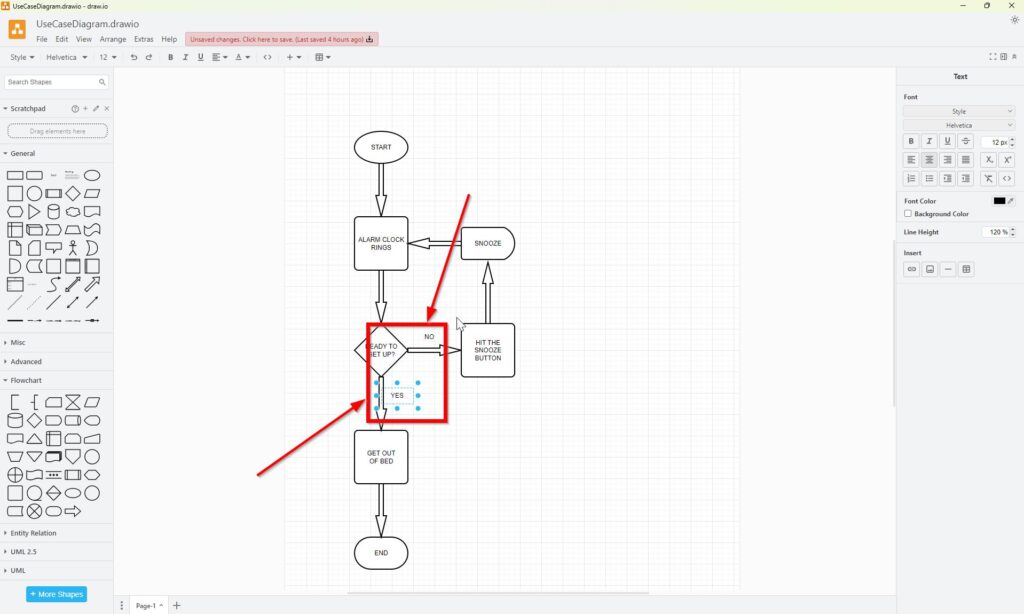
The final Flowchart
Now, the flowchart shows a complete cycle — from the moment the alarm rings to either getting up or going through a snooze loop.
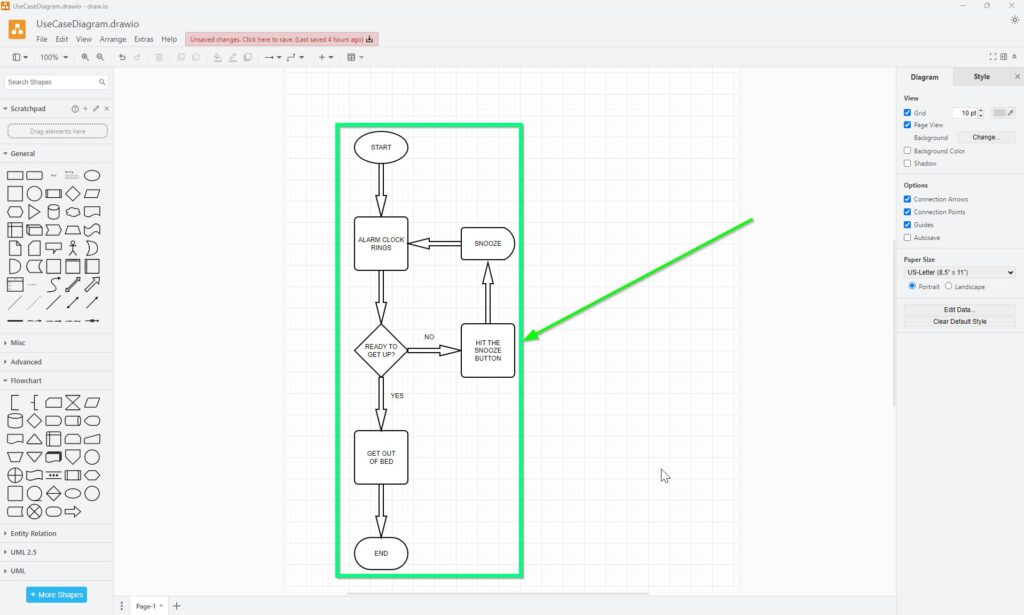
Final Thoughts
Creating flowcharts with draw.io has changed the way I think about processes. Whether I’m working on software, mapping out ideas, or planning daily routines, flowcharts help me stay focused.
And best of all? They’re incredibly easy to make. With just a few shapes and arrows, I can turn any idea into a clear, visual plan.
So, the next time you feel stuck, try building your own flowchart example with draw.io. You’ll be surprised how much clarity it brings.
Let your ideas flow — one box at a time.
What’s Next?!
Now that I’ve shown you how to create a clear flowchart example in draw.io, it’s time to start from a clean slate and build your own diagrams from scratch. In my next guide, How to Create a Blank Diagram in draw.io, I’ll walk you through the quickest way to open a new, empty canvas, choose the right diagram settings, and get everything ready for your next flowchart.


